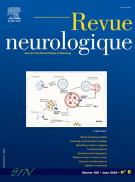Neuromyelitis optica spectrum disorders: Features of aquaporin-4, myelin oligodendrocyte glycoprotein and double-seronegative-mediated subtypes - 13/06/18

| pages | 13 |
| Iconographies | 0 |
| Vidéos | 0 |
| Autres | 0 |
Abstract |
The new diagnostic classification of neuromyelitis optica spectrum disorder (NMOSD) in 2015 highlights the central role of biomarkers, such as antibodies against aquaporin-4 (AQP4-Ab), in diagnosis. Also, in approximately 20–25% of patients without AQP4-Ab (NMOSDAQP4−) the presence of an antibody directed against myelin oligodendrocyte glycoprotein (MOG) characterizes a specific population of NMOSD patients (NMOSDMOG+), according to their demographic and clinical data and prognoses. While double-seronegative cases (NMOSDNEG) have not been fully described, they may correspond to the very first patients with opticospinal demyelination reported by Devic and Gault in 1894. The present report reviews the current knowledge of the pathophysiology and clinical features of NMOSDAQP4+, NMOSDMOG+ and NMOSDNEG patients, and also discusses the relationship between the extended spectrum of MOG disease and NMOSDMOG+. Finally, the current treatments for acute relapses and relapse prevention are described, with a focus on serological-based therapeutic responses and the promising new therapeutic targets.
Le texte complet de cet article est disponible en PDF.Keywords : Neuromyelitis optica spectrum disorder, Aquaporin-4, Myelin oligodendrocyte glycoprotein, Negative NMOSD, Treatment
Plan
Vol 174 - N° 6
P. 458-470 - juin 2018 Retour au numéroBienvenue sur EM-consulte, la référence des professionnels de santé.
L’accès au texte intégral de cet article nécessite un abonnement.
Bienvenue sur EM-consulte, la référence des professionnels de santé.
L’achat d’article à l’unité est indisponible à l’heure actuelle.
Déjà abonné à cette revue ?

